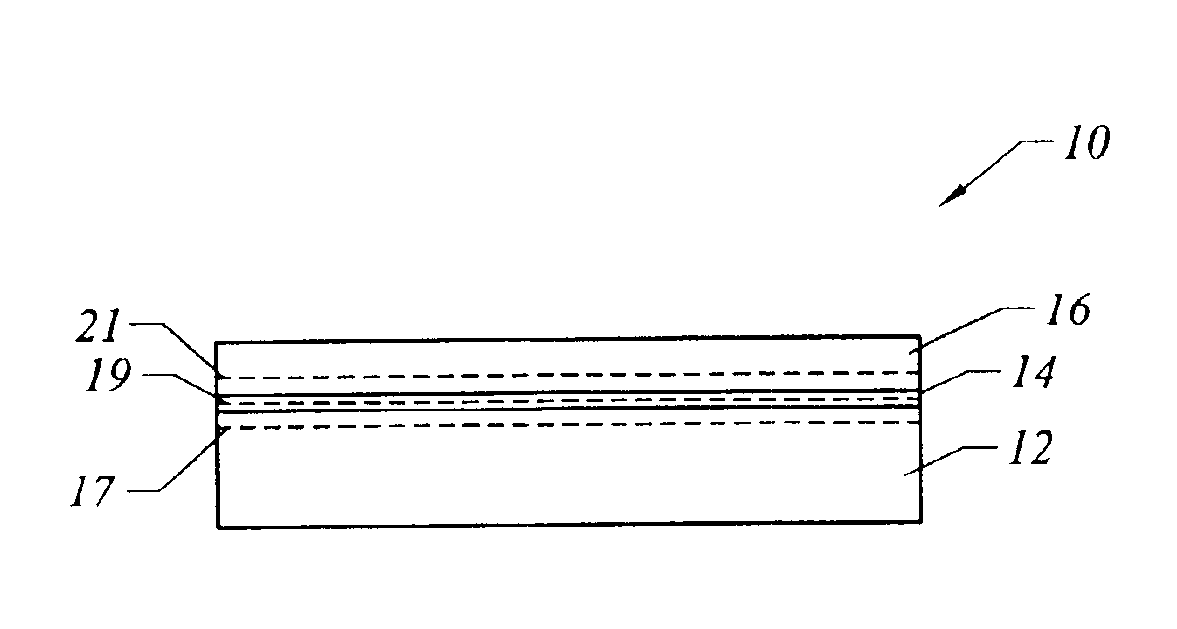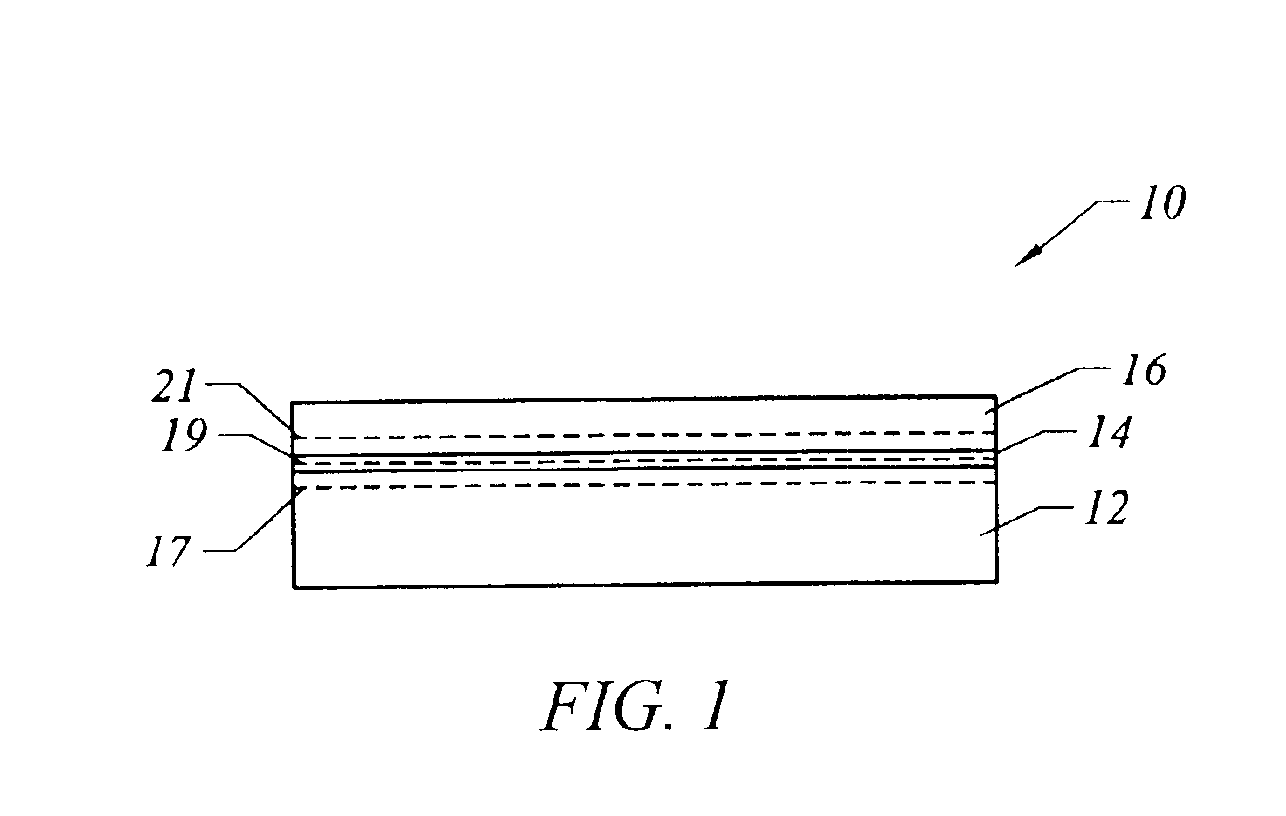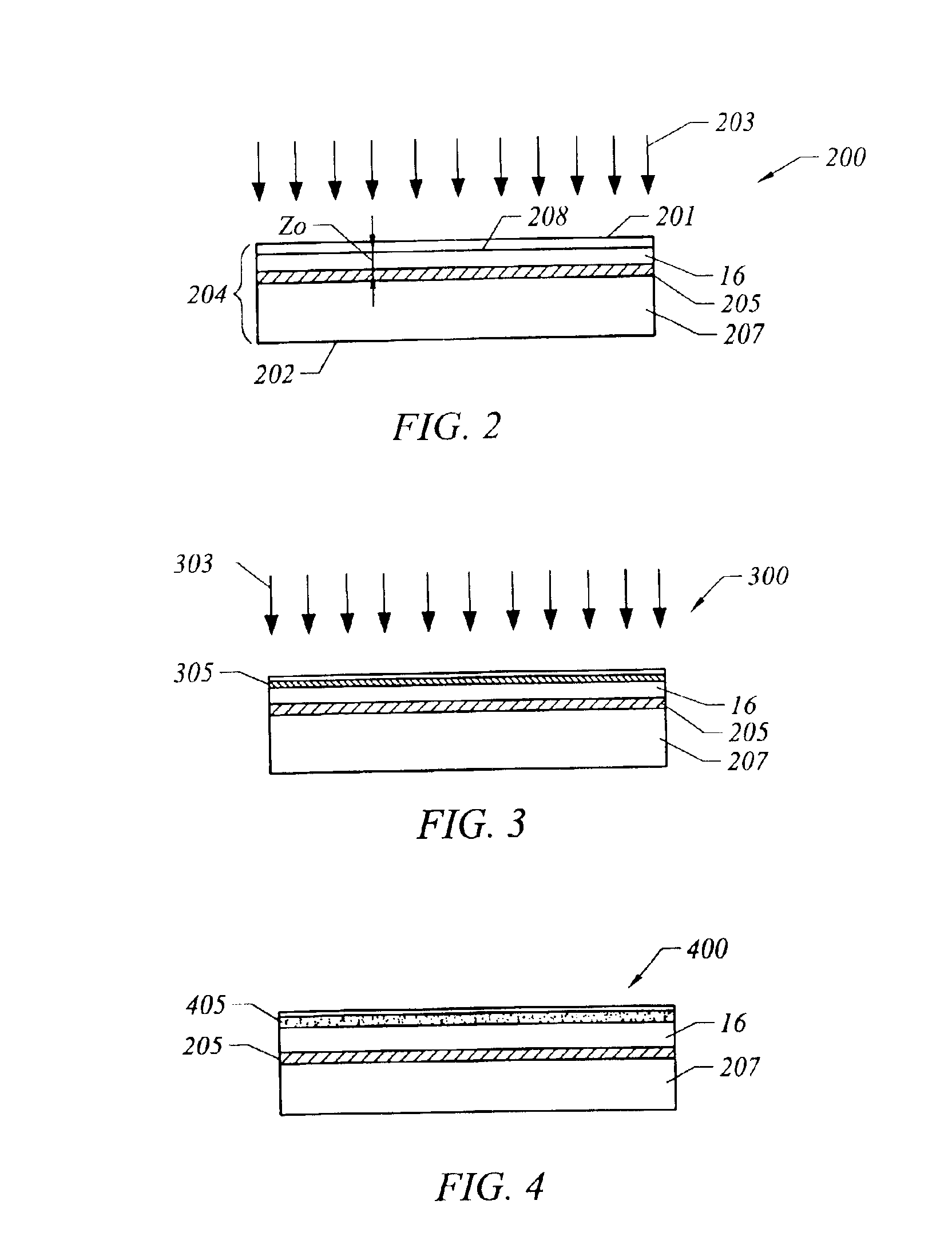Gettering technique for wafers made using a controlled cleaving process
- Summary
- Abstract
- Description
- Claims
- Application Information
AI Technical Summary
Benefits of technology
Problems solved by technology
Method used
Image
Examples
Embodiment Construction
[0016]The present invention provides an SOI wafer with a gettering layer for removing impurities from an active region of an integrated circuit to be formed on the wafer. In a specific embodiment, a gettering layer is formed in an SOI wafer made using a controlled cleaving process. The gettering layer is generally beneath an active region of the devices that will be formed on the SOI wafer. The SOI wafer is made using a controlled cleaving process, which is described in Henley, noted above.
[0017]1. Silicon on Insulator Substrate
[0018]FIG. 1 is a simplified cross section of an SOI wafer 10 according to an embodiment of the present invention. The Fig. is not to scale and is merely an illustration, which should not limit the scope of the claims herein. The SOI wafer 10 includes numerous features including a lower substrate 12, an insulating layer(s) 14, and a film of material 16, which will include active devices in later processing steps. The film of material, which can be a silicon m...
PUM
 Login to View More
Login to View More Abstract
Description
Claims
Application Information
 Login to View More
Login to View More - R&D
- Intellectual Property
- Life Sciences
- Materials
- Tech Scout
- Unparalleled Data Quality
- Higher Quality Content
- 60% Fewer Hallucinations
Browse by: Latest US Patents, China's latest patents, Technical Efficacy Thesaurus, Application Domain, Technology Topic, Popular Technical Reports.
© 2025 PatSnap. All rights reserved.Legal|Privacy policy|Modern Slavery Act Transparency Statement|Sitemap|About US| Contact US: help@patsnap.com



